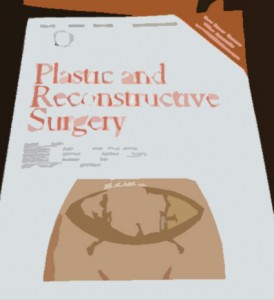August 2012 Plastic and Reconstructive Surgery Journal had an article on “Assessment of Postoperative Venous Thromboembolism Risk in Plastic Surgery Patients Using the 2005 and 2010 Caprini Risk Score.” Phew! That is quite a title, eh? In English, what it is talking about is blood clots. One of the biggest risks with any surgery is a blood clot. If the blood clot (which usually forms in the leg) dislodges, then it can travel to the lung and make it difficult to breathe or, if large enough, can be deadly.

So you can imagine it is a big deal to figure out who is at risk for this. We do all sorts of things to try to minimize the risk: squeezing booties on your calves to keep blood flow moving during surgery, making you get out of bed at least three times a day after surgery, and if you are at high enough risk, give you shots or IV medication against clotting. So if we give high risk people shots to prevent clotting, and the blood clot can be deadly, why don’t we give that shot to everyone? Simple answer: bleeding. Many of the surgeries we do have a lot of surface area… If we thinned everyone’s blood, then we would have higher rates of bleeding issues, which may require take backs to the operating room, blood transfusions, and perhaps slower healing, higher infection, and wound issues due to anemia.
So who is at high risk?
The original Caprini Risk Score came out in 2005 to predict your risk of blood clot. The thought was any score over 8 indicates a higher risk of clot. When looking at over 3000 patients, they found the 60 day post operative risk for a blood clot in those with scores over 8 was about 5%. (Which means 95% of patients don’t get a blood clot, but the 5.8% risk was statistically significant.)
The study published compares the new 2010 scoring system to the 2005 scoring. It finds the new scoring gives out more points. (In the new system, a score over 8 had a 2.5% risk of blood clot.) In the article, the authors wonder if a new stratification system needs to be in place to make the new, more detailed, higher scoring scale more statistically significant since it is more detailed and the average person is scoring more points. They recommend sticking to the 2005 system until there is a formal validation with appropriate determination of new risk levels before adopting the new scoring.
The test I posted on my blog is the new, higher score 2010 version. Again, it is unclear what the point system means, as it now assigns 2-5 points just for the surgery itself. But I think the score is interesting. You may not know of your status on things like Factor V Leiden or lupus anticoagulant, but age, birth control pills, family history or personal history of blood clot, BMI over 30, etc are things you do know and do affect your potential risk of DVT.
